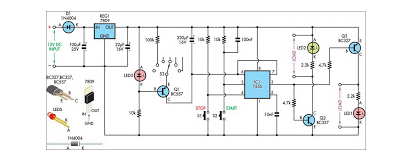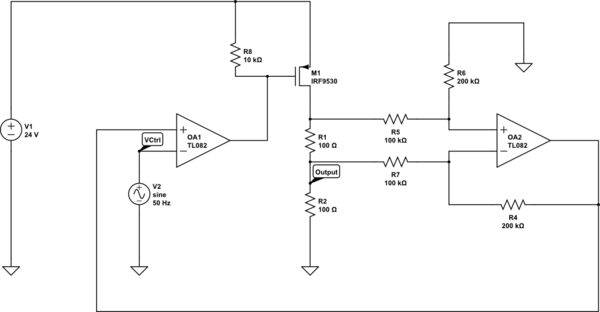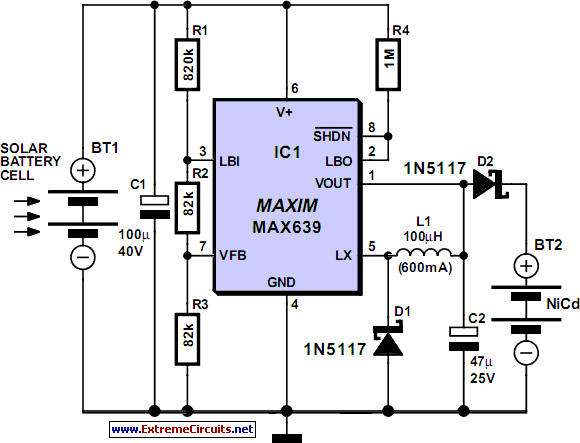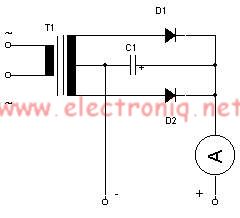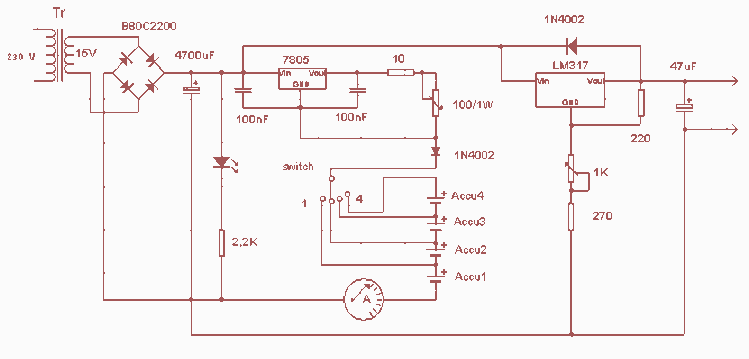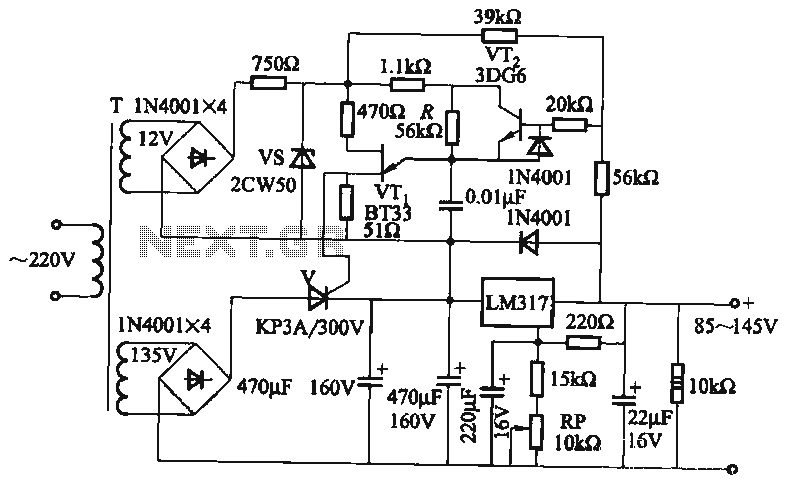
Ni-MH Ni-Cd Adjustable Constant Current Charger
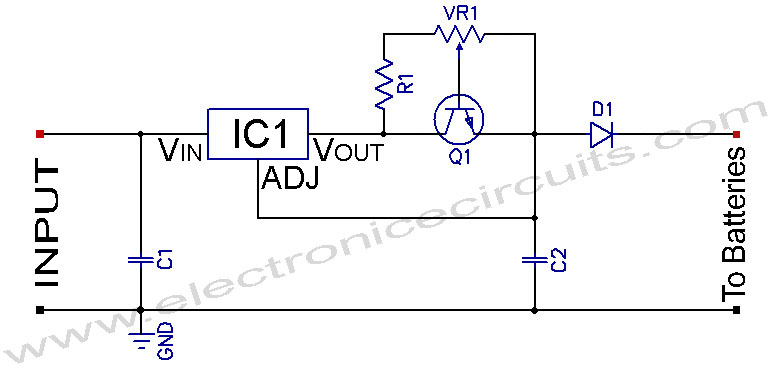
Adjustable Constant Current Ni-Cd and Ni-MH Battery Charger Circuit. This circuit is designed to provide an adjustable constant current for charging Ni-MH or Ni-Cd batteries.
The adjustable constant current battery charger circuit is engineered to cater to the specific charging requirements of Nickel-Cadmium (Ni-Cd) and Nickel-Metal Hydride (Ni-MH) batteries. The circuit typically incorporates a current source configuration that allows the user to set the desired charging current, which is crucial for optimizing battery life and performance.
Key components of the circuit may include a voltage regulator, operational amplifiers, resistors for current sensing, and a potentiometer to adjust the current output. The voltage regulator ensures that the output voltage remains stable during the charging process, while the operational amplifiers can be configured to monitor the current flow and provide feedback for maintaining the set current level.
The design should also consider safety features such as overcurrent protection and thermal management to prevent overheating during operation. Additionally, the circuit may include indicators, such as LEDs, to signal the charging status and completion.
Overall, this adjustable constant current charger circuit is a versatile solution for efficiently charging Ni-Cd and Ni-MH batteries, ensuring they operate optimally and have a prolonged lifespan.Ni-Cd Ni-MH Adjustable Constant Current Battery Charger Circuit This is a Adjustable Constant Current Ni-MH or Ni-Cd battery charger circuit. It.. 🔗 External reference
The adjustable constant current battery charger circuit is engineered to cater to the specific charging requirements of Nickel-Cadmium (Ni-Cd) and Nickel-Metal Hydride (Ni-MH) batteries. The circuit typically incorporates a current source configuration that allows the user to set the desired charging current, which is crucial for optimizing battery life and performance.
Key components of the circuit may include a voltage regulator, operational amplifiers, resistors for current sensing, and a potentiometer to adjust the current output. The voltage regulator ensures that the output voltage remains stable during the charging process, while the operational amplifiers can be configured to monitor the current flow and provide feedback for maintaining the set current level.
The design should also consider safety features such as overcurrent protection and thermal management to prevent overheating during operation. Additionally, the circuit may include indicators, such as LEDs, to signal the charging status and completion.
Overall, this adjustable constant current charger circuit is a versatile solution for efficiently charging Ni-Cd and Ni-MH batteries, ensuring they operate optimally and have a prolonged lifespan.Ni-Cd Ni-MH Adjustable Constant Current Battery Charger Circuit This is a Adjustable Constant Current Ni-MH or Ni-Cd battery charger circuit. It.. 🔗 External reference
